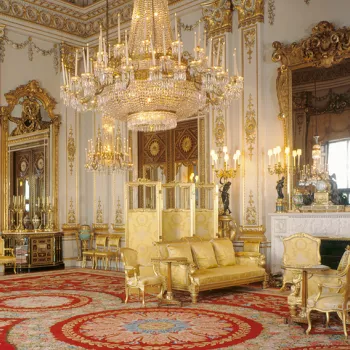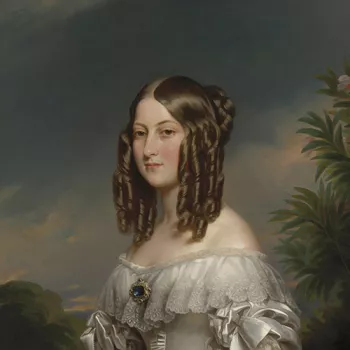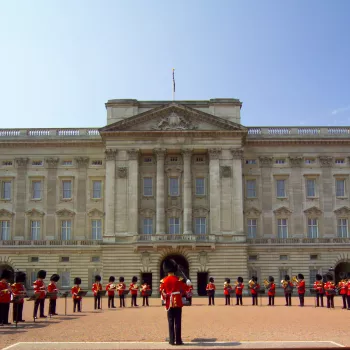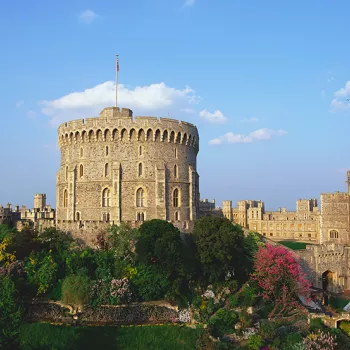History of the East Wing of Buckingham Palace
Buckingham Palace is one of the most iconic buildings in the world. The East Wing of the Palace includes the front façade and features the famous central balcony. The Monarch and members of the Royal Family have made appearances on the balcony since 1851.
The principal rooms of the East Wing are Chinese-themed and furnished with some of the finest works in the Royal Collection, many of which were moved from George IV’s Royal Pavilion in Brighton upon its sale in 1850.
Who built the East Wing?
When Queen Victoria moved into Buckingham Palace only a few days after the death of her uncle William IV, it had never been used as the principal residence of a monarch before. The Palace had been empty for seven years following the death of Victoria’s uncle, George IV. George had commissioned at great expense the conversion of Buckingham House into a Palace to the designs of architect John Nash. The king never occupied the Palace, and his successor, William IV, preferred to live at Clarence House in London during his short reign.
The queen’s ministers advised her to stay at Kensington Palace, her childhood home, until Buckingham Palace could be brought up to a suitable standard, but Victoria wanted to move immediately and begin her new life.
The architect Edward Blore was commissioned to draw up plans for alterations to Buckingham Palace, to increase the accommodation for Victoria’s growing family. Between 1847 and 1849, the East Wing was added at the front, enclosing what had previously been an open, horseshoe-shaped courtyard and introducing the famous central balcony.
It was at Prince Albert’s suggestion that the balcony be included on the front of the Palace. This is probably the most important addition, as it meant the Royal Family could allow themselves to be visible and connect with the public.
The build of the East Wing was financed through the sale of George IV’s seaside retreat in Brighton, the Royal Pavilion, in 1850. The style of the architecture and interiors of the Pavilion reflected the King’s love of Asian art and design and upon the sale of the building, its contents, including some of the finest ceramics and furniture in the Royal Collection, were transferred to the Wing and inspired the Chinese-themed décor of its principal rooms.
Highlights of the East Wing
The East Wing is made up of many rooms including the Yellow Drawing Room, the Principal Corridor and the Centre Room. These rooms are filled with extraordinary works from the Royal Collection.
Watch our short film to see inside Buckingham Palace’s East Wing and explore the rooms behind the famous balcony.
Inside Buckingham Palace’s East Wing ©
The Principal Corridor, which runs the length of the Wing includes paintings by artists Franz Xaver Winterhalter, Sir Thomas Lawrence and Thomas Gainsborough. The paintings at the north end of the corridor are primarily portraits of Queen Victoria and her family as well as scenes of important events in her life. Winterhalter’s portrait of Queen Victoria shows her in evening dress, holding the hand of her eldest son, Albert Edward, Prince of Wales. Winterhalter painted numerous portraits at the English court. Another wonderful painting by John Charlton shows Queen Victoria arriving at St Paul’s Cathedral in London as part of her Diamond Jubilee celebrations.
The Principal Corridor also holds two magnificent State portraits of King Edward VII and Queen Alexandra. The painting of the queen shows her wearing her Coronation robes over a gold dress as well as the George IV diadem.
In the Yellow Drawing Room there are two large, hexagonal, nine-tiered Chinese porcelain pagodas and the Kylin Clock. The beautiful Kylin Clock combines pieces of Asian porcelain with a French clock.
A magnificent glass chandelier, shaped to resemble a lotus flower, features in the Centre Room, the room which leads onto the famous balcony. There are also many beautiful Chinese porcelain vases which were originally supplied to George IV in 1807.
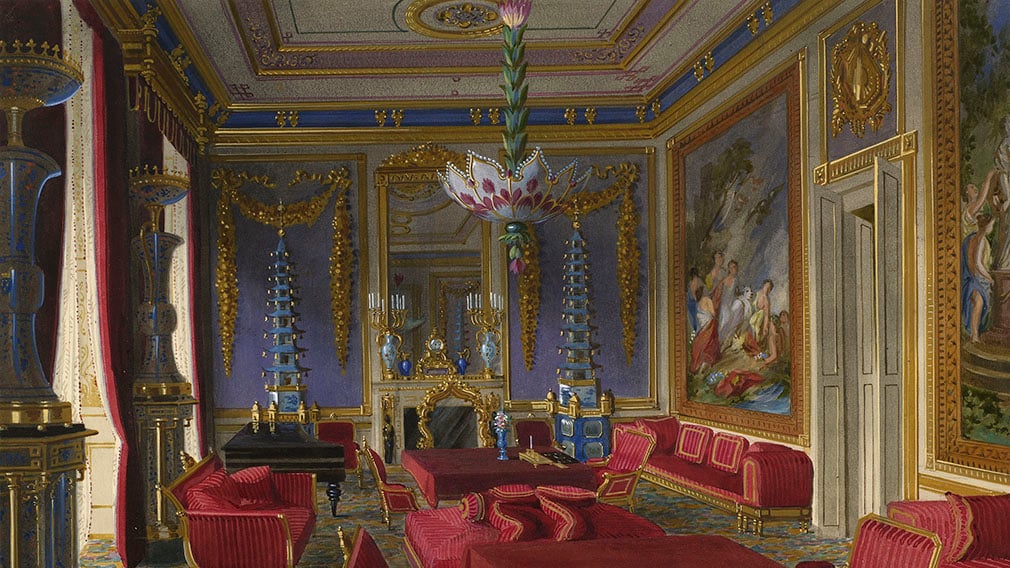
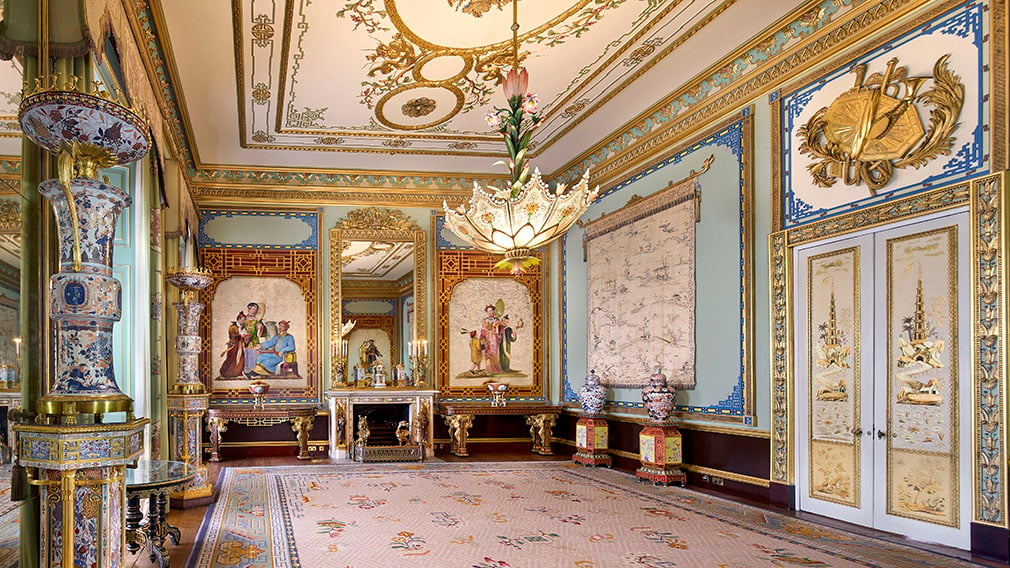
The Reservicing of Buckingham Palace
The Reservicing of Buckingham Palace is a ten-year programme of works to update the essential services to one of the UK's most iconic buildings. Miles of ageing cables, lead pipes, electrical wiring and boilers are being replaced as part of the Programme, many for the first time in over 60 years.
The Reservicing Programme will also improve visitor facilities and accessibility, as well as create a more energy-efficient environment for staff, guests and visitors to the building.
As part of the reservicing programme around 3,500 pieces were moved from the East Wing to allow for essential renovations to take place.
How can I visit the East Wing of Buckingham Palace?
There are two ways to enjoy a visit to the East Wing of Buckingham Palace:
- January to May 2025 - East Wing Exclusive Guided Tours. These tours are a more in-depth look at the history of the East Wing and the works of art on display. They do not include a visit to the State Rooms of Buckingham Palace.
- July and August 2025 - The State Rooms and East Wing Highlights Tour allows you to combine a tour of the East Wing with a visit to the State Rooms.





